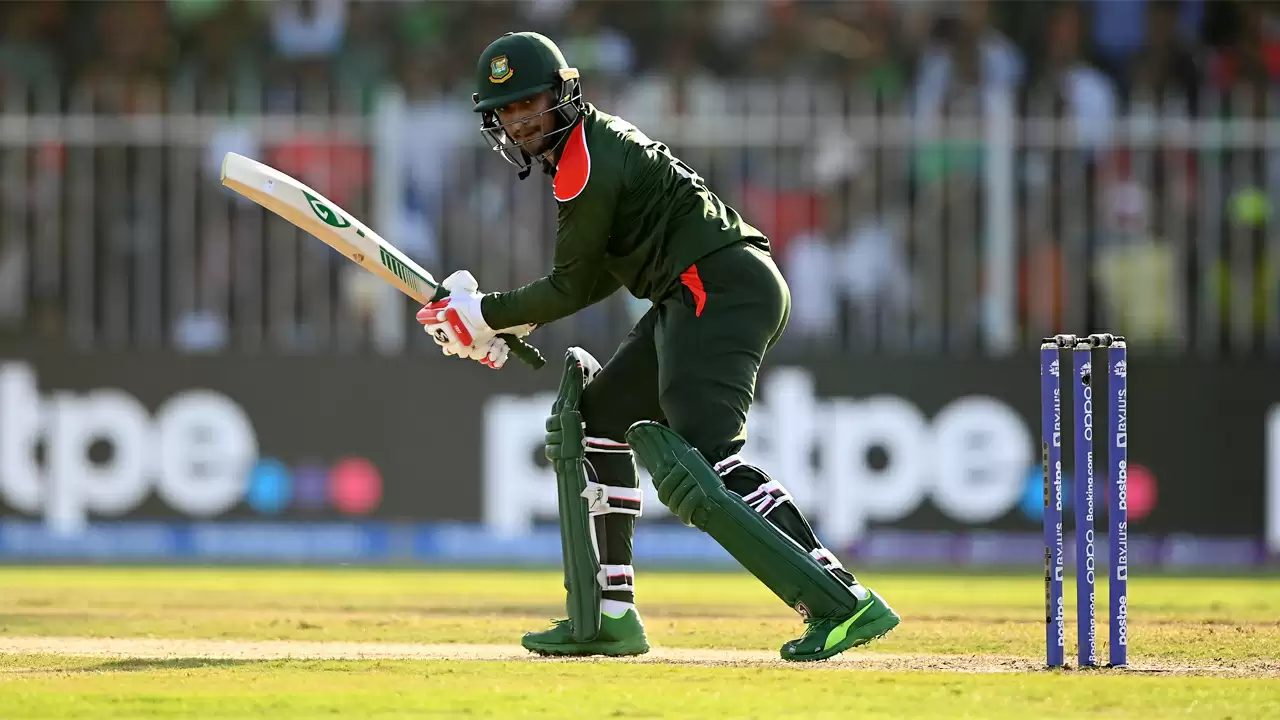
Would be extremely difficult for Bangladesh to compete without their premier allrounder rising to the occasion Down Under.

Bangladesh have been a punching-bag team at the last seven editions of the men’s T20 World Cup.
Expected to find the shortest format to their liking when T20 was in its infant stage, Bangladesh have only faced the heat of its brutal nature, winning just 7 of their 33 previous games since the tournament’s inaugural edition back in 2007.
Of these seven wins, only one has arrived while facing a Test-playing nation. Bangladesh have suffered more defeats to associates than the full members they’ve beaten.
The team have been to the ‘main round’ of a T20 World Cup four times, of these 16 games they’ve lost all 16 – making it a disastrous record that reflects the country’s deep-rooted issues with the T20 game.
Over time it has been evident that neither the Bangla Tigers’ young talent has sufficed at the world stage nor have their established big names managed to leave their imprint on matches.
A telling tale from the crux of the issue is that with the protagonist figure of Shakib Al Hasan, whose persistent struggles at T20 World Cups have held his team back significantly.
Entering the looming event in Australia, Shakib has made his runs in the previous editions of the marquee tournament at a measly average of 26.84 while carrying an insipid strike-rate of 124.64 over 31 innings.
Holding a critical spot in the middle order, Shakib’s failures have dictated Bangladesh’s fortunes at each T20 World Cup. In only one of the last seven editions of the ICC competition has Shakib managed to keep his strike-rate past 130 while also averaging above 30.
Shakib’s skilful left-arm spin bowling – avg 17.29; ER 6.43 – seems to have helped him paper over his problems with the bat in hand and avoid criticism. Otherwise, the batter has been major responsible for why Bangladesh have remained the whipping boys of T20 World Cup history.
The last year’s event in UAE only reinforced the Shakib-trouble that has plagued the Bangladeshis. In a tournament where they lost to Scotland in the first round before facing successive hammerings at the hands of Australia, South Africa, England, Sri Lanka and West Indies, he collected only 43 runs being part of four of those six losses, going at a disastrous SR of 79.62.
When Bangladesh needed their premier allrounder to come out firing with bat in hand and allow them greater breathing ground in matches against top-flight oppositions, Shakib Al Hasan was on a hiding, giving a horrible account of his well-renowned pedigree.
An argument could be made that Shakib’s affluence, witnessed regularly in the longer versions of the game, has never been on show in T20Is. The veteran averages 20.45 with an awful strike-rate of 117.73 after 64 matches for Bangladesh.
But that would be belying his evident ability: at his best, Shakib can take down the opposition attacks in the middle stages of the innings, enabling his team to build positively towards the final flourish. Case in point his most productive IPL season with the bat for Sunrisers Hyderabad (SRH), wherein he recorded an avg-SR combo of 32.42-149.34 in 2013. Being a left-hander, Shakib gives his team options to play out more match-ups than they would with a right-hander.
Why then, does he stand today as a T20I failure for Bangladesh is one of cricket’s biggest mysteries unresolved. Either way, the Bangla Tigers need their key man to overcome his longstanding issues and help them counter the conditions in Australia that couldn’t be more foreign to the ones they tackle at home in Dhaka.
Placed in a challenging group alongside India, Pakistan and South Africa, the road for Bangladesh to start mending their pedestrian record wouldn’t be covered without Shakib Al Hasan ending his own bumpy ride with the bat. Can he shed his historic troubles and for once prove to be his team’s T20 World Cup hero?